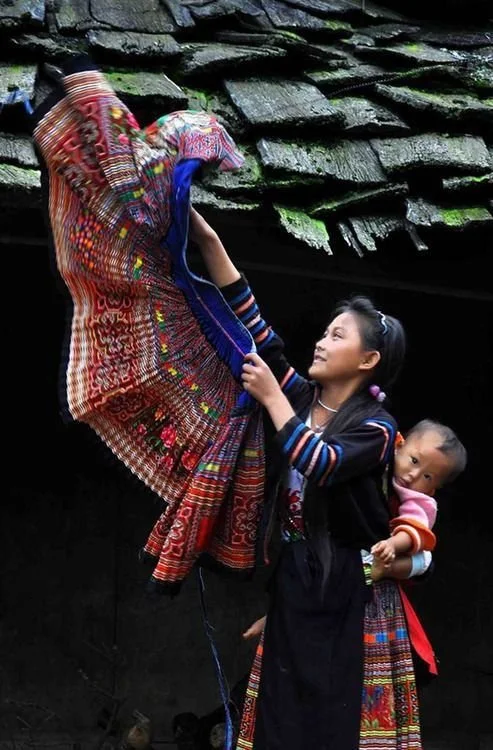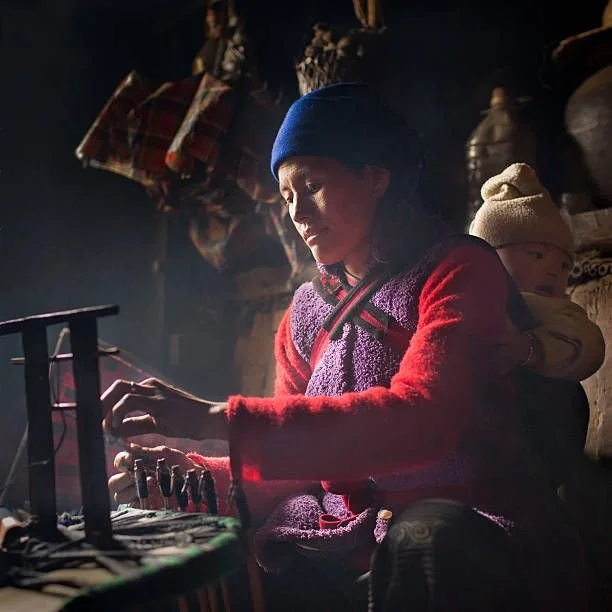Carried With Love: The Universal Language of Babywearing
From the very beginning of human history, carrying our babies has been far more than a simple means of transport — it has always been an expression of love, connection, and survival. Across every climate and culture, babywearing has remained a constant thread, evolving to meet different needs and environments, yet always centred on keeping babies close to their caregivers’ hearts.
A Biological Imperative
Human babies are born deeply dependent, designed to be close to us. Unlike many other mammals, our babies arrive neurologically unfinished, needing ongoing warmth, nourishment, and safety. This idea, often called the “fourth trimester,” highlights the vital importance of continuous contact in those early months of life.
When we carry our babies, we create a comforting, womb-like environment after birth. Close contact helps keep their temperature steady, supports their heart rate and breathing rhythms, and offers essential emotional reassurance. At its core, carrying is woven into our biology — a gentle, ongoing message that says: “You are safe; you belong here.”
Two babies rest peacefully on their mothers’ backs in a rural village in Tanzania, East Africa. These women of the Sukuma ethnic group carry their children using boldly patterned kangas — traditional Swahili cloths known for their vibrant colours, cultural symbolism, and everyday practicality. The babies are secured with a simple twist and tuck, held snug against the warmth of their mothers’ backs as life moves around them. One tiny leg peeks out, adorned with a green beaded anklet — a quiet marker of identity and tradition. These carriers are not just fabric; they are continuity. Here, amidst conversation and connection, babywearing flows with the rhythm of community life.
A Shared Human Tradition
While the materials and designs differ from place to place, the essence of babywearing is remarkably similar everywhere. Geography has always shaped these traditions — lightweight cloth wraps in warm, humid climates; thick, fur-lined garments in arctic regions. No matter the setting, parents adapted to their surroundings to keep babies close, safe, and comfortable.
Babywearing allowed caregivers to move, work, and participate fully in community life while nurturing their children. Babies learned language, social cues, and the rhythms of daily life from a secure vantage point on their caregiver’s body. Rather than isolating infants, babywearing wove them into the fabric of family and community from their very first days.
In this joyful portrait, an Inuit mother wears a traditional amauti, her child peeking out from the wide, protective hood.
The amauti is an extraordinary parka unique to Inuit mothers, designed with a deep back pouch that cradles the baby against her warmth. The large hood can be adjusted to cover both mother and child, shielding them from icy winds while allowing the child to look out and feel part of the world.
This carefully sewn garment, often decorated with subtle details and trims, reflects deep ancestral knowledge of skin sewing and Arctic survival. It embodies the close, continuous contact so central to Inuit parenting — keeping babies safe, loved, and part of daily life on the land.
More Than Convenience
Modern research confirms what traditional cultures have always known: carrying supports a baby’s healthy physical development, emotional security, and strong, loving attachment. Babies who are worn often cry less, rest more peacefully, and feel calmer and more content. For caregivers, babywearing nurtures a deep sense of connection and confidence, creating a gentle, steady rhythm to daily life and strengthening bonds from the very beginning.
Carriers themselves often hold deeper meaning: they represent family stories, cultural identity, and community pride. In many traditions, a baby carrier is far more than a piece of fabric — it is a living symbol of belonging and care.
A young Hmong mother in northern Vietnam carries her baby on her back while hanging a vividly embroidered skirt to dry. The child is held securely in a traditional baby carrier made from a length of indigo-dyed cloth, fastened around the mother’s waist and tied across the chest to anchor the baby snugly against her back. The baby peeks over her shoulder, arms resting comfortably along her side. The carrier blends seamlessly with her everyday clothing — rich with colourful, geometric needlework and pleated textiles typical of Hmong craftsmanship. In the highland regions of East Asia, such as the mountains of northern Vietnam, Laos, and southern China, this style of babywearing allows for freedom of movement while completing household tasks or working in the fields. It reflects both the artistry and practicality embedded in caregiving traditions passed down through generations.
An Invitation to Explore
This new series, Around The World In A Baby Carrier, will take you on a journey through babywearing traditions around the world — from the rebozos of Mexico to the mantas of the Andes, from the woven flax of Aotearoa to the amauti of the Arctic, and beyond.
We will explore how these carriers reflect the landscapes, histories, and values of the people who created them. Along the way, we will celebrate both the practical genius and the deep cultural significance that carrying holds.
Whether you’re a parent, a babywearing educator, or simply someone fascinated by the wisdom of traditional care practices, this series invites you to connect with the universal language of carrying — a timeless, loving embrace shared by families everywhere.
A woman weaves by lamplight inside a traditional Himalayan home, her baby carried high on her back in a thick, structured cloth carrier. The wide shoulder straps cross firmly across her chest, keeping her child nestled safely behind her as she works. With careful hands and deep focus, she tends to the loom — her posture upright, her strength steady. The baby’s knitted cap and relaxed body speak to the warmth and security of their bond, held close while daily life continues. This image reflects the deep interweaving of motherhood, craftsmanship, and tradition in Himalayan mountain communities — where generations are quite literally carried through the rhythms of everyday life.
A note of gratitude and respect
We respectfully acknowledge and honor the individuals and communities depicted in historical images throughout this series. Many of these photographs were taken in times and contexts where informed consent as we understand it today was not sought or given, and some may have been created through coercion or exploitation.
We share these images with the deepest gratitude, not to romanticize or objectify, but to recognize and celebrate the strength, resilience, and wisdom of these cultural practices. We hold these ancestors and knowledge holders in our hearts and aim to represent their traditions with integrity, humility, and care.
We commit to continuing to learn, listen, and uplift the voices of contemporary community members and descendants, and we welcome guidance on the respectful sharing of these images.




